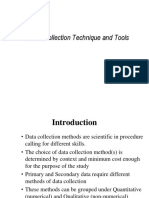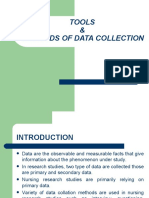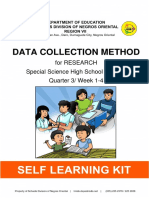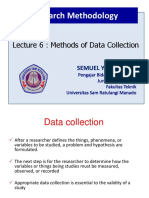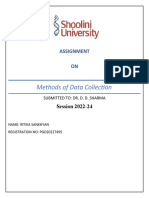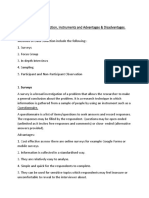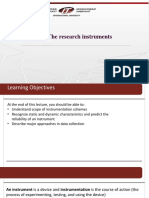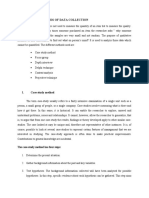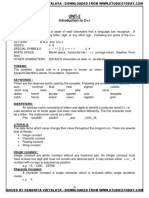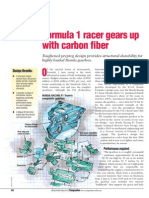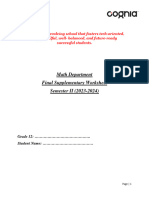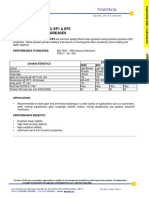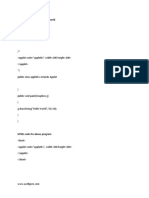0% found this document useful (0 votes)
24 views45 pagesTopic 6, Methods of Data Collection
The document discusses methods of data collection, defining data as information used to validate research results. It outlines various data collection methods such as surveys, observations, interviews, focus groups, document reviews, and experiments, along with their advantages and disadvantages. Additionally, it distinguishes between primary and secondary data collection, and explains types of data including qualitative and quantitative data.
Uploaded by
gilbertlusale3Copyright
© © All Rights Reserved
We take content rights seriously. If you suspect this is your content, claim it here.
Available Formats
Download as PDF, TXT or read online on Scribd
0% found this document useful (0 votes)
24 views45 pagesTopic 6, Methods of Data Collection
The document discusses methods of data collection, defining data as information used to validate research results. It outlines various data collection methods such as surveys, observations, interviews, focus groups, document reviews, and experiments, along with their advantages and disadvantages. Additionally, it distinguishes between primary and secondary data collection, and explains types of data including qualitative and quantitative data.
Uploaded by
gilbertlusale3Copyright
© © All Rights Reserved
We take content rights seriously. If you suspect this is your content, claim it here.
Available Formats
Download as PDF, TXT or read online on Scribd
/ 45












